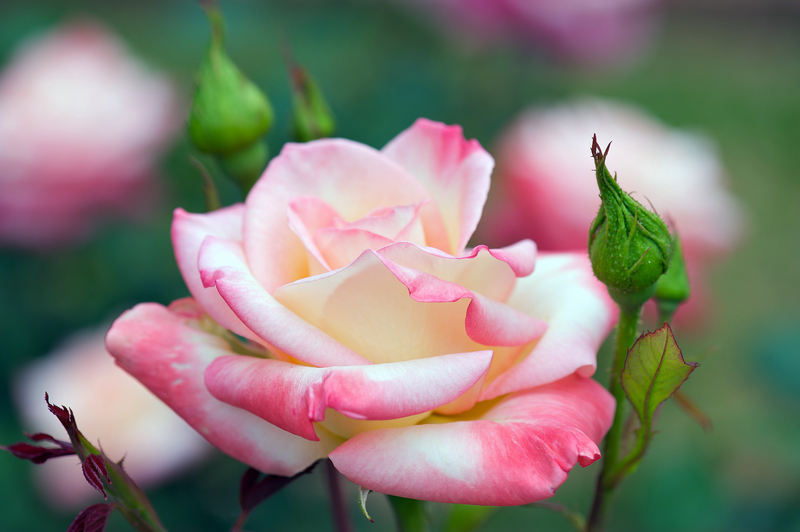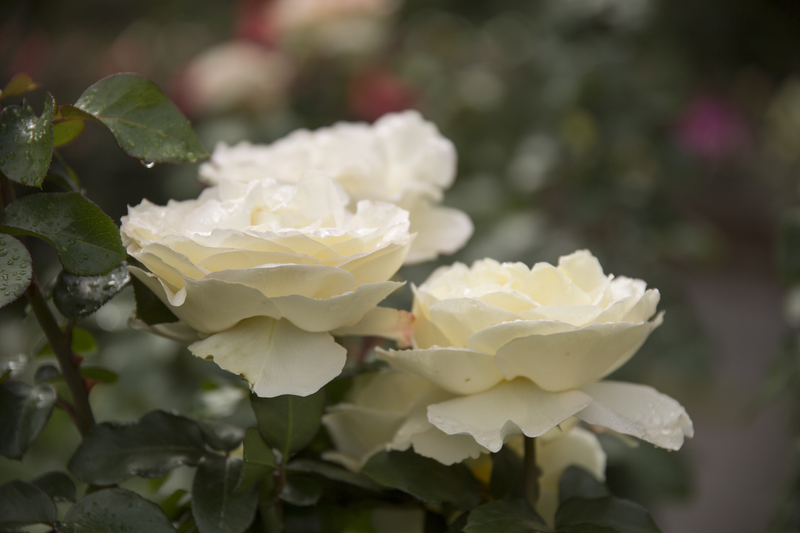Ensuring Winter Safety for Your Beloved Garden Plants
Posted on 24/08/2025
Ensuring Winter Safety for Your Beloved Garden Plants
As the crisp chill of winter approaches, dedicated gardeners often find themselves concerned about the well-being of their cherished green spaces. Ensuring winter safety for your beloved garden plants is not just an act of care--it's an investment in the future vibrancy and beauty of your garden. Whether your plants are perennials, annuals, or delicate shrubs, the right protection strategies can make all the difference during freezing temperatures. In this comprehensive guide, discover proven techniques to shield your plants from harsh winter conditions, promote healthy regrowth, and maintain an enchanting garden year-round.
Understanding the Importance of Winter Plant Protection
Why is winter such a critical period for gardens? The plummeting temperatures, biting winds, and intermittent thawing and freezing pose significant threats to plant life. Many species enter a dormant state, but without proper winter garden care, they remain vulnerable to frost damage, dehydration, and even death. Protecting your garden in winter not only safeguards your investment but also encourages stronger and more robust plants come spring.
Main Challenges Facing Garden Plants in Winter
- Frost Damage: Ice crystals can rupture plant cells, causing wilting or blackened foliage.
- Desiccation: Cold winds and low soil moisture draw water from leaves and roots.
- Root Freezing: Shallow-rooted plants are particularly susceptible to icy soils.
- Wildlife Disturbance: Hungry animals may nibble on bark and tender shoots.
- Temperature Fluctuations: Rapid freeze-thaw cycles can destabilize plants and crack stems or bark.

Assessing Your Garden's Winter Risk
To devise an effective winter safety plan for garden plants, begin by evaluating your garden's specific vulnerabilities. Climate zone, plant species, garden layout, and previous winter experiences all play a role in determining which protections are necessary. Ask yourself:
- Which plants experienced winter damage last year?
- Do I have tender perennials, bulbs, or newly planted specimens?
- Is my garden exposed to wind or low-lying frost pockets?
- What wildlife frequent my area during winter?
A short winter survey like this enables you to focus your efforts and resources where they are most needed.
Proven Methods for Protecting Garden Plants in Winter
1. Mulching: Nature's Blanket
Professionals and seasoned gardeners agree: mulching is key to winter garden safety. A thick layer of organic mulch acts as insulation, stabilizing soil temperature, retaining moisture, and suppressing weed growth. Apply 2 to 4 inches of straw, shredded leaves, pine needles, or compost around the base of your plants just after the first hard frost. For evergreens and shallow-rooted perennials, mulch shields roots from freeze-thaw stress--one of the most dangerous winter threats.
Tip: Avoid piling mulch against stems or trunks to prevent rot.
2. Frost Covers: Shields Against the Cold
For particularly tender plants, consider the use of frost covers, cloches, or agricultural fleece. These breathable materials trap warmth while letting light and moisture through. On nights when a hard frost is expected, drape covers over plants at sunset and remove them in the morning to prevent overheating.
- Commercial frost fabrics: Ideal for delicate flowers and vegetables.
- DIY solutions: Old bed sheets or burlap work in a pinch.
3. Water Wisely
Winter dehydration is a silent killer. Plants still lose water through their leaves (even in dormancy), while frozen soil impedes absorption. To ensure winter safety for your cherished garden plants:
- Deeply water your garden before the first freeze; moist soil insulates better than dry.
- On warm spells, check soil moisture and water as needed, especially for evergreens and recent transplants.
- Be mindful not to overwater--waterlogged soil may promote root rot if drainage is poor.
4. Windbreaks and Barriers
Cold winds exacerbate desiccation and windburn. Installing temporary winter windbreaks--such as snow fencing, burlap screens, or even recycled Christmas trees--can shield vulnerable plants. Situate the barriers to block prevailing winds while allowing air circulation to prevent fungal diseases.
5. Protecting Container Plants
Potted plants are especially at risk since their roots are not insulated by surrounding soil. To shield container plants from winter damage:
- Move pots to sheltered locations such as garages, cold frames, or indoors (if species permits).
- Cluster containers together and wrap them with bubble wrap, burlap, or hessian to conserve heat.
- Elevate containers off the ground to prevent waterlogging and freeze cracks.
6. Pruning for Protection
Prune carefully before winter--removing dead or damaged wood prevents disease and stress during winter storms. However, avoid late-season heavy pruning, as it can stimulate new growth susceptible to frost. For shrubs and trees, delay major pruning until late winter or early spring.
7. Dealing with Snow and Ice
While snow acts as a natural insulator, excessive snow and heavy ice can break branches and stems. After heavy snowfall:
- Gently brush snow off shrubs and small trees using an upward motion.
- Avoid knocking off ice--it's often safer to let it melt naturally than risk snapping brittle branches.
Special Care Tips for Different Plant Types
Evergreens
Evergreen trees and shrubs continue to lose water during winter. Protect them with anti-desiccant sprays and by adding extra mulch around the base.
Roses
Hybrid tea roses and other non-hardy varieties require extra care. Mound soil or compost around the base, and cover with burlap or rose cones. Prune lightly to reduce wind damage but avoid heavy trimming.
Bulbs and Perennials
After foliage dies back, leave it in place to capture snow. Add a thick mulch layer over beds to stabilize ground temperatures and reduce premature sprouting during mid-winter thaws.
Tender Vegetables
Extend the harvest season for cold-hardy greens, cabbage, and root crops using cold frames, row covers, or low tunnels.
Common Mistakes to Avoid in Winter Plant Care
- Neglecting to mulch or insulate roots in time.
- Over-pruning in early fall, stimulating frost-prone growth.
- Watering too infrequently or allowing plants to dry out before winter.
- Leaving containers exposed to repeated freeze-thaw cycles.
- Forgetting to remove snow or ice buildup after winter storms.
Long-Term Benefits of Robust Winter Plant Safety Measures
The effort you invest in protecting your garden through winter yields significant rewards:
- Increased plant survival and vigor in spring.
- Reduced loss of expensive or rare plants.
- Earlier, more beautiful garden displays after thaw.
- Minimized disease and pest problems stemming from winter stresses.
Any seasoned gardener will tell you: A little prevention goes a long way!

Frequently Asked Questions -- Ensuring Winter Safety for Garden Plants
Q: When should I start preparing my garden for winter?
Begin your winter garden safety preparations in late autumn, after the first frost but before sustained freezing temperatures. This timing allows you to tidy, mulch, and move delicate plants while monitoring weather forecasts for harsh changes.
Q: What is the best mulch for winter plant protection?
Shredded leaves, straw, pine needles, and bark chips are all effective and organic choices. Avoid using fresh grass clippings or wood that may harbor pests.
Q: Can I use plastic to cover my plants in winter?
Plastic is not recommended, as it traps moisture and can suffocate plants or lead to freeze damage during sunny winter days. Instead, use breathable materials such as burlap, garden fleece, or old sheets.
Q: How do I protect young trees or shrubs from wildlife?
Install wire mesh, hardware cloth, or tree guards around the trunk's base to prevent gnawing by rabbits and deer. Scent repellents and reflective tapes can deter browsing animals.
Conclusion: Make Winter a Season of Care for Your Garden
Ensuring winter safety for your beloved garden plants is an essential part of responsible gardening. The coldest months shouldn't be a period of loss--instead, they offer the opportunity to nurture and prepare your garden for its next chapter of lush, healthy growth. With careful planning, attention to detail, and a few well-chosen protective measures, you can weather the winter together with your plants, emerging in spring with a garden that's more vibrant than ever.
Remember: your plants depend on you for their winter protection--let these colder months become a season of thoughtful care and anticipation. Your garden will thank you when the first buds begin to bloom!
```


